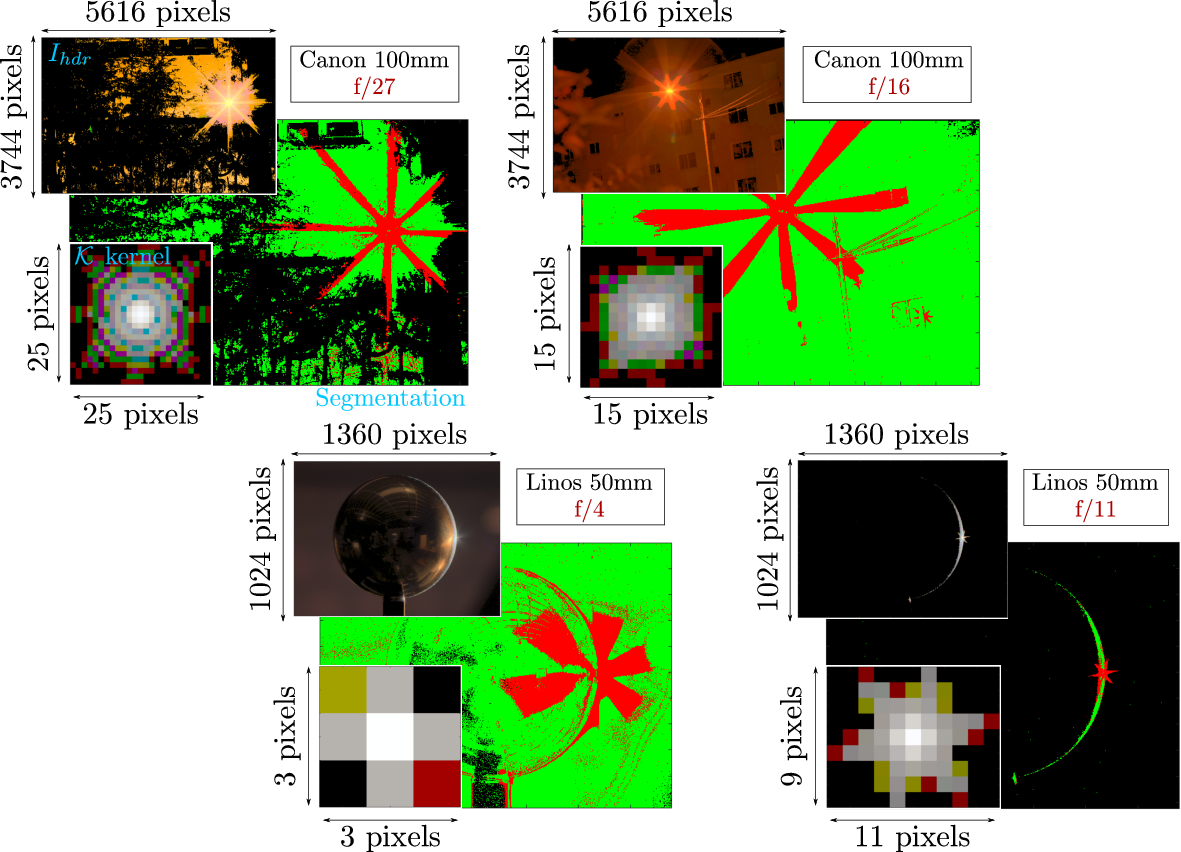Section: New Results
From Acquisition to Display
Diffraction effects detection for HDR image-based measurements [21], [15]
Modern imaging techniques have proved to be very efficient to recover a scene with high dynamic range (HDR) values. However, this high dynamic range can introduce star-burst patterns around highlights arising from the diffraction of the camera aperture. The spatial extent of this effect can be very wide and alters pixels values, which, in a measurement context, are not reliable anymore. To address this problem, we introduce [21], [15] a novel algorithm that, utilizing a closed-form PSF, predicts where the diffraction will affect the pixels of an HDR image, making it possible to discard them from the measurement. Our approach gives better results (cf. Figure 10) than common deconvolution techniques and the uncertainty values (convolution kernel and noise) of the algorithm output are recovered.
|
A low-cost multitouch spherical display: hardware and software design [17], [18]
Spherical mulitouch displays offer exciting possibilities but are still costly. In this work [17], we first describe hardware and software considerations to build a more affordable one, with off-the-shelf optical components and 3D printed elements. We exploit the technology of laser-beam steering projectors and use optical tracking for multitouch. Besides, although spherical displays become more and more pervasive, the design of interactive content for these displays still remains difficult as it requires most developers to get familiar with specific tools for managing the output and input. We thus present [18] a framework for developing applications for multitouch spherical displays that makes it possible to create interactive content by programming standard GUI applications, as for example interactive web pages. The principal idea is to adapt the window output and interaction input of classical GUIs outside the application. To this end, our framework consists of two standalone applications where the first one captures the window output and changes the projection via GPU shaders, and the second one adapts the input with a Node.js server and sends interaction and mouse events. In this way, the same application runs on a standard desktop, and on the spherical display. Advantages of our approach include fast prototyping, and the fact that masses of developers can create applications for spherical displays just as if it were, for example, classical web applications. We believe that our framework will contribute to making spherical displays even more pervasive in the future.



